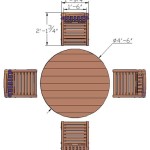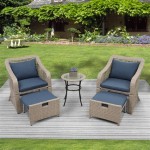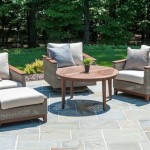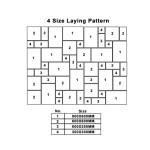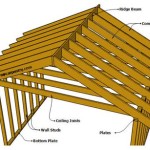Curtains To Cover Patio Doors: A Comprehensive Guide
Patio doors offer a gateway to the outdoors, bringing natural light and fresh air into a dwelling. However, these large expanses of glass can also present challenges regarding privacy, light control, and insulation. Curtains offer a versatile and aesthetically pleasing solution to address these concerns. Choosing the right curtains for patio doors requires careful consideration of factors such as fabric, style, functionality, and installation.
The selection of curtains for patio doors should align with the overall design aesthetic of the interior space. Curtains can serve as a focal point or blend seamlessly with existing décor. Further, the practical needs of the space where the patio door is located should be heavily weighted in the decision-making process. This article provides a comprehensive guide to selecting and utilizing curtains for patio doors, addressing key considerations and offering insights into optimal solutions.
Prioritizing Light Control and Privacy
One of the primary reasons for installing curtains on patio doors is to manage light infiltration and ensure privacy. The level of light control required will depend on the orientation of the patio door, the desired ambiance of the room, and any sensitivity to direct sunlight. Likewise, the need for privacy is dictated by the proximity of neighboring properties and the activities within the room.
For rooms that receive intense sunlight, blackout curtains or curtains with a blackout lining are an excellent choice. Blackout curtains are designed to block nearly all light, creating a darkened environment suitable for bedrooms or media rooms. They are typically constructed from tightly woven fabrics or incorporate a special coating that prevents light from passing through. These curtains can also help to reduce glare on televisions and computer screens during daylight hours.
Dim-out curtains, also known as room-darkening curtains, offer a less extreme level of light control. They filter out a significant portion of sunlight but allow some ambient light to enter the room. Dim-out curtains are a good option for living rooms or dining rooms where complete darkness is not required but reduced light levels are desirable. These curtains often feature multiple layers of fabric to enhance their light-filtering capabilities.
Sheer curtains provide the least amount of light control but offer a degree of privacy while still allowing natural light to diffuse into the room. Sheer curtains are made from lightweight, translucent fabrics that filter light and create a soft, airy feel. They are suitable for spaces where privacy is not a major concern or where a layered curtain arrangement is used, combining sheer curtains with heavier drapes for versatility.
Beyond fabric type, the color of the curtains also influences light control. Darker colors tend to absorb more light, while lighter colors reflect it. For optimal light blocking, dark-colored blackout curtains are recommended. For maximizing natural light while maintaining some level of privacy, light-colored sheer curtains are a better choice.
Selecting the Right Fabric and Style
The fabric and style of curtains play a crucial role in both the functionality and aesthetics of the window treatment. Different fabrics possess unique properties that affect light control, insulation, durability, and overall appearance. The style of the curtains, including the heading and hanging method, also contributes to the overall design and functionality.
Cotton is a popular choice for curtains due to its affordability, versatility, and ease of care. Cotton curtains are available in a wide range of colors, patterns, and weights, making them suitable for various styles and decors. However, cotton is prone to fading and shrinking, especially when exposed to direct sunlight. Cotton blends, such as cotton-polyester mixtures, offer increased durability and resistance to wrinkles and fading.
Linen is a natural fiber that offers a sophisticated and elegant look. Linen curtains have a distinctive texture and drape beautifully. They are breathable and allow some light to filter through, creating a soft and airy atmosphere. However, linen is prone to wrinkling and requires more careful maintenance than cotton. A linen blend can mitigate some of these drawbacks.
Silk curtains offer a luxurious and opulent feel. Silk is a delicate fabric that drapes exquisitely and adds a touch of elegance to any space. However, silk is sensitive to sunlight and moisture, requiring professional cleaning and careful handling. Due to their higher cost and maintenance requirements, silk curtains are typically used in formal settings or as decorative accents.
Polyester is a synthetic fabric that is durable, wrinkle-resistant, and easy to care for. Polyester curtains are available in a wide range of colors, patterns, and textures. They are a good option for high-traffic areas or rooms where durability is a primary concern. Polyester curtains are also relatively inexpensive, making them a cost-effective choice.
The style of the curtain heading, which refers to the way the curtain is attached to the rod, also influences the overall appearance. Common heading styles include grommet tops, rod pockets, pleats, and tab tops. Grommet tops create clean, contemporary lines and allow the curtains to slide easily along the rod. Rod pockets offer a more traditional and gathered look. Pleated curtains provide a tailored and formal appearance. Tab tops create a casual and relaxed feel.
The length of the curtains is another important consideration. Curtains that puddle on the floor create a dramatic and luxurious effect. Curtains that graze the floor offer a more tailored and sophisticated look. Curtains that fall slightly above the floor are a practical choice for high-traffic areas, preventing the fabric from dragging and collecting dirt.
Addressing Insulation and Energy Efficiency
Curtains can contribute significantly to the energy efficiency of a home by providing insulation against heat loss in the winter and heat gain in the summer. By reducing the transfer of heat through patio doors, curtains can help to lower energy bills and create a more comfortable indoor environment.
Thick, heavy fabrics such as velvet, wool, and insulated curtain liners offer the best insulation properties. These fabrics create a barrier against heat transfer, reducing the amount of energy required to heat or cool the room. Blackout curtains, with their tight weave and light-blocking capabilities, also provide excellent insulation.
Thermal curtains are specifically designed to enhance insulation. They feature multiple layers of fabric, including a thermal lining that reflects heat back into the room in the winter and reflects heat away from the room in the summer. Thermal curtains can significantly reduce energy consumption and improve the comfort of a dwelling.
Proper installation is crucial for maximizing the insulating benefits of curtains. Curtains should be installed as close to the patio door as possible to minimize air gaps. Extend the curtain rod beyond the width of the door frame to allow the curtains to fully cover the door when closed. Consider using valances or cornices to further seal off the top of the window and prevent air leakage.
Layering curtains can also improve insulation. Combining sheer curtains with heavier drapes allows homeowners to adjust the level of insulation based on the weather conditions. During the summer months, sheer curtains can provide some shade and prevent excessive heat gain. During the winter months, heavy drapes can be drawn to provide additional insulation against heat loss.
In addition to insulation, curtains can also help to protect furniture and floors from fading caused by direct sunlight. UV rays can damage fabrics and finishes over time, leading to discoloration and deterioration. By blocking or filtering sunlight, curtains can prolong the life of furnishings and prevent premature fading. This is especially important for items placed near patio doors that receive a high degree of direct sunlight.
Ultimately, the selection of curtains for patio doors involves a balance between aesthetics, functionality, and practicality. By carefully considering the factors discussed in this article—light control, privacy, fabric, style, and insulation—homeowners can choose curtains that enhance the beauty and comfort of their homes while also improving energy efficiency and protecting their belongings.
Maintaining curtains properly is essential for preserving their appearance and functionality. Regular dusting or vacuuming can remove surface dirt and prevent buildup. Washing or dry cleaning curtains according to the manufacturer's instructions can keep them looking fresh and clean. Promptly addressing stains or spills can prevent permanent damage. Periodic inspections can identify any signs of wear and tear, allowing for timely repairs or replacements.
Choosing curtains for patio doors is an investment that can significantly impact the look, feel, and energy efficiency of a living space. A thoughtful selection process ensures that the chosen curtains meet the specific needs and preferences of the homeowner, creating a comfortable and stylish environment for years to come.

Patio Glass Door Curtains Ideas Photos Tips Spiffy Spools

Patio Glass Door Curtains Ideas Photos Tips Spiffy Spools

25 Best Patio Door Curtain Ideas Designs Window Dressing Sliding Glass Coverings Curtains

Choosing The Right Patio Door Treatments Pella Windows Doors

2 Panel French Door Curtains With Rod Pocket Tieback Indoor Sun Blocking Grommet Thermal Blackout Curtain For Window Kitchen Patio Doors 25 X

10 Patio Door Curtain Ideas You Ll Love

Off White Sliding Glass Door Curtain Shade 1 Panel

100 X84 Emily Sheer Extra Wide Voile Sliding Door Patio Curtain Panel Ivory No 918

Sun Zero Grant 100 X 84 Grommet Top Patio Curtain Panel Blush

How Do You Buy Curtains For Door Windows The Blinds Spot

